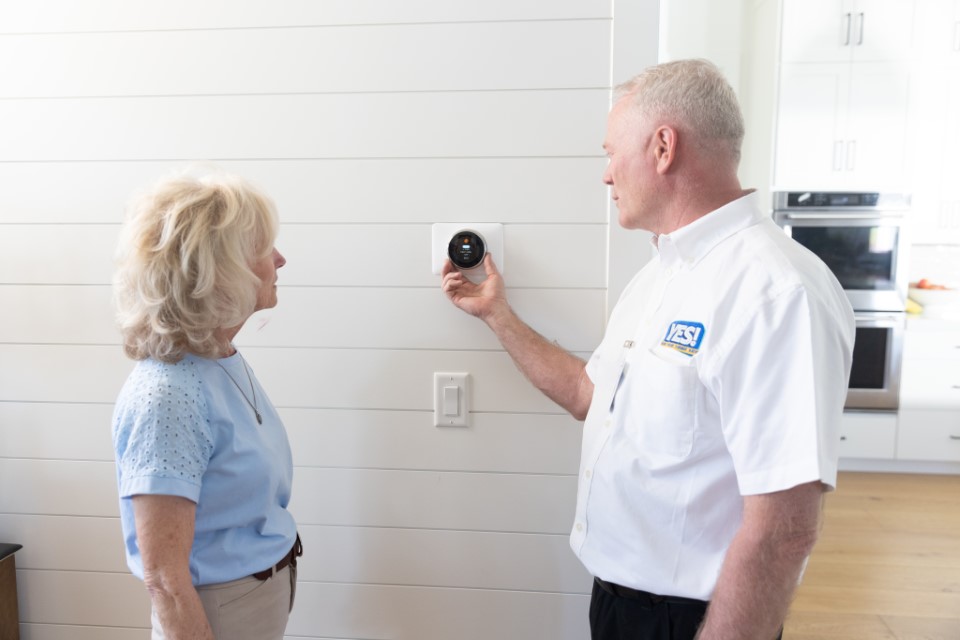The Truth About Common Heating Myths
April 26, 2023

As a homeowner, you need to know the facts when it comes to maintenance and money-saving practices. Your utility bills are no exception. Find out the truth about common heating myths so you can get the most out of your HVAC system—without the high heating bills.
There are a wide variety of ways to save money and energy when it comes to heating your home. There are also numerous false claims circulating around the internet and passing through your family and social circles.
Were you taught to believe one of these common home heating myths?
Myth #1: Closed Heating Vents Will Reduce Heating Costs
It is not uncommon for homeowners to close the vents in rooms they use less often, such as a laundry room or small bathroom. The belief is that they are saving energy by not heating these rooms, and therefore, their heating bills will be lower.
Unfortunately, this is not the case. Heating systems are designed to provide balanced distribution based on the size of the home. This means that when you close off a vent, the heated air will still flow to these areas of the house, but once it gets there, it has nowhere to go. Pressure then builds up within the ducts and actually causes your heating system to work much harder to compensate for the unbalanced flow.
Pro Tip: Make sure you are getting maximum efficiency by regularly changing filters, having your ducts cleaned, and getting annual furnace tune-ups.
Myth #2: Keeping the Thermostat at a Steady Temperature Saves Energy
You may have been told that it is easier for your heater to maintain a comfortable temperature if you set it and leave it alone. The reality is that this strategy only makes sense if you rarely leave home. You will waste more energy (and money) heating an empty house.
Your best option is to set the thermostat at a lower temperature when you will be gone for several hours, such as during the workday. When you get home, set it back to your desired temperature. You can also lower the temperature slightly at night to save energy while you sleep.
Pro Tip: Get a programmable thermostat and set it on a timed schedule. You can even set it to adjust the temperature automatically when nobody is home, and to start warming up just before you get home so you don’t have to wait for it to reach a comfortable temperature.
Myth #3: Dramatically Changing the Temperature Setting Will Speed Up Heating
You may also have been told that if you crank up your thermostat higher than it needs to be, it will heat your home more quickly. However, most heaters are not equipped with fast and slow settings. They operate at only one speed, so raising the temperature won’t help you warm up faster. In fact, it may actually cause your heater to work harder and use even more energy.
Pro Tip: Some programmable thermostats are equipped with smart home settings, which means you can control them from an app on your phone. This way, you can start the heater remotely and your home will be nice and toasty when you arrive.
Myth #4: It is Normal for Walls and Floors to be Cold During the Winter
If you touch a wall with your hand and it feels cold, or you walk barefoot into the kitchen and need to run back for your bunny slippers, is this normal? One of the most common heating myths is that cold walls and floors are just a natural part of winter.
Actually, your home should be able to keep the cold air outside and the warm air in, even when the temperature drops outside. Cold exterior walls are typically an indicator that your home is not properly insulated.
If you notice interior walls, floors, or entire rooms that feel cold, it may be something else. Check to make sure there are no air leaks from broken seals around doors and windows.
Pro Tip: If there are no seals that can be repaired, or this doesn’t solve the problem, make sure your ducts, vents, and filters are clean or contact our professional team at Yes! to check your heating system and insulation.
Myth #5: My Furnace Only Needs Maintenance If It Isn’t Working
Another common home heating myth is that you only need to have your furnace checked out if there is a problem. On the contrary, manufacturers, the utility companies, and Energy Star all recommend you get an annual tune-up for your HVAC system. Failing to do so may even void your warranty. During this inspection, the technician will make sure everything is in good condition and make recommendations for improving your home’s comfort and efficiency. This can save you from frustrating and expensive problems down the road.
If you do run into a problem between annual appointments, however, make sure to contact a furnace repair professional for assistance.
Pro Tip: Don’t wait for things to break before scheduling an appointment. If anything seems off or it has been a while since your last tune-up, get it checked out right away.
Myth #6: If My Furnace Blows Cold Air, I Need a New One
It is common for furnaces to last 15 to 20 years before they need to be replaced. Unless your furnace has been around for a pretty long time, it can probably be repaired instead of replaced. If the problem is isolated to one area of the house, you may have a clogged duct, vent, or filter. A furnace repair technician will be able to identify and correct the problem or let you know for certain if your furnace needs to be replaced.
Some common signs to watch out for include weird noises or smells coming from your furnace, cool air blowing instead of warm, or a noticeable increase in your heating bills.
Pro Tip: If your furnace is more than 15 years old and exhibiting multiple signs of failure, consider replacing it. Learn more about furnace replacement.
Myth #7: Energy Efficient Windows Will Solve My Heating Problems
Energy efficient windows are a great idea—if you need them. However, there is a good chance you can improve the heating in your home and save energy without spending thousands of dollars on new windows. Replacing your windows will not make much of a difference on your heating bill, if any, unless you have already addressed other problems.
Start with a property inspection and look for any areas where heat may be escaping to the outdoors or cold air may be seeping in—for example, cracks around doors and windows, or outside vents and plumbing. Insufficient insulation can also make a huge difference in your home’s comfort and efficiency. A fireplace is another common culprit. Although it creates a cozy ambience, your fireplace is most likely letting more heat out than you realize.
Pro Tip: Instead of replacing your windows, make sure you have the proper amount of insulation in your walls and attic.
Complete Comfort & Satisfaction with Yes!
We provide 24/7 emergency service in Utah and Nevada. For additional information on HVAC services, call our team at 844-216-9300 and speak with a technician today.
Last Updated: May 25, 2023
